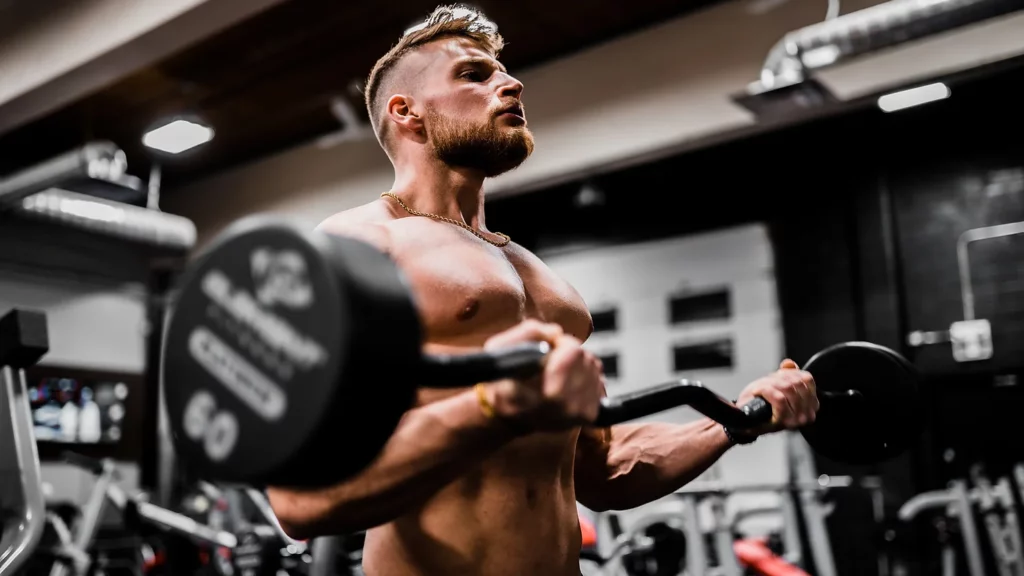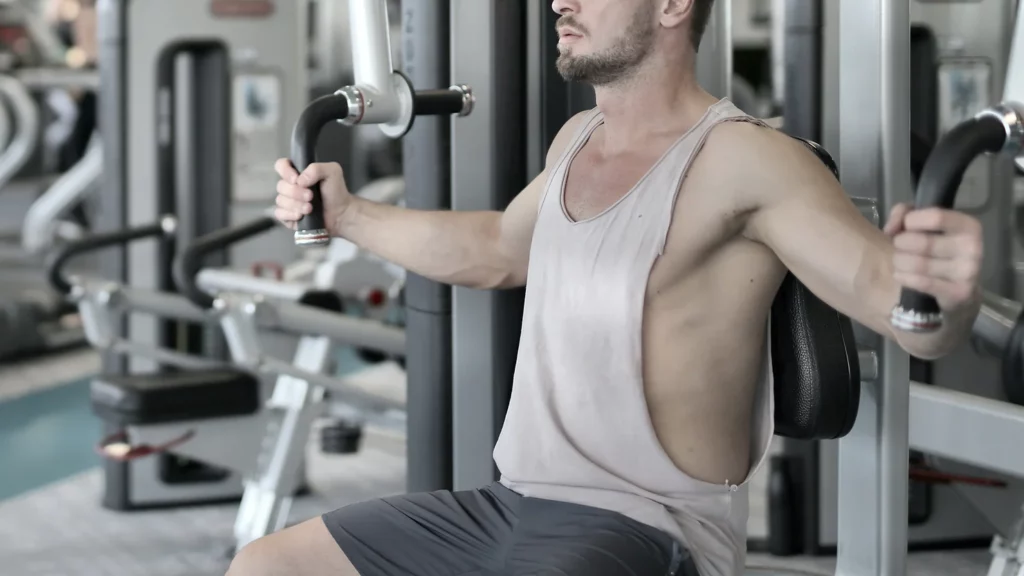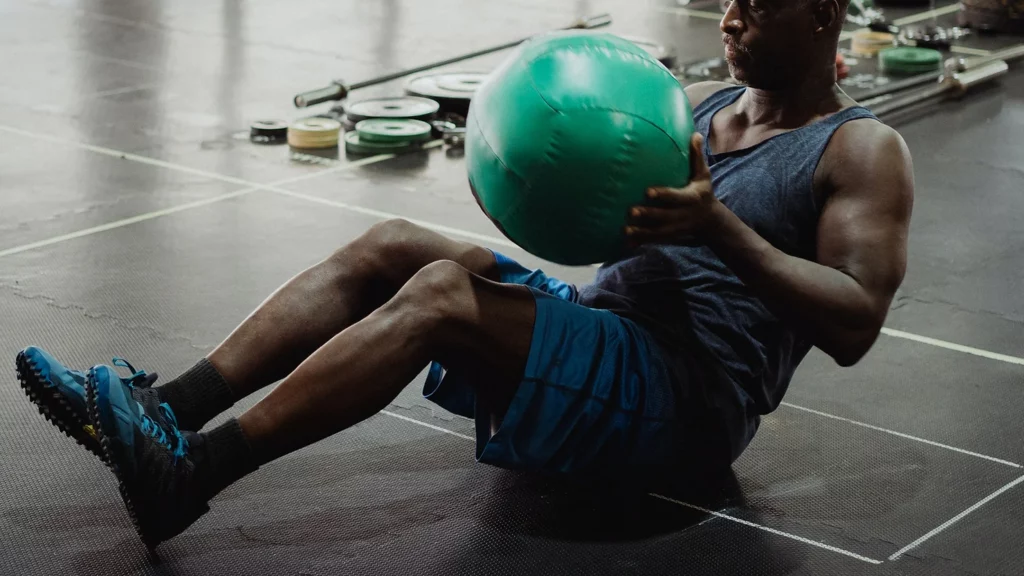What is the Long Head Bicep?
The long head bicep is a two-headed muscle that runs along the front of your upper arm. The long head is the larger of the two heads, and it makes up the majority of your bicep’s mass.
This muscle is responsible for several key functions, including:
-
Flexing your elbow (bringing your hand closer to your shoulder)
-
Supinating your forearm (turning your palm up)
-
Stabilizing your shoulder joint
The long head bicep is attached to the upper arm bone (humerus) by a tendon called the bicipital tendon. This tendon runs through a groove in the shoulder blade, which allows the long head bicep to move your arm in a wide range of motion. The long head bicep is also attached to the forearm bones (radius and ulna) by tendons, which allow it to supinate your forearm.
Because of its key role in elbow and shoulder movement, the long head bicep is involved in a variety of exercises. From weightlifting to bodyweight exercises, this muscle gets a lot of work. However, not all exercises are created equal. In this article, we will focus on the long head bicep exercises that are most effective for building muscle.
How to isolate the long head bicep during exercise?
One of the challenges with long head bicep exercises is that it can be difficult to isolate this muscle. This is because the long head bicep works together with other muscles, such as the short head bicep, to move your arm. As a result, you may find that other muscles are doing more work than the long head bicep during certain exercises. There are a few ways to overcome this challenge:
-
Use lighter weights. This will help you focus on using the long head bicep, rather than other muscles, to move the weight.
-
Perform slow, controlled reps. This will help you better isolate the long head bicep and prevent other muscles from taking over.
-
Use a variety of exercises. This will help ensure that you are targeting the long head bicep from all angles, and preventing other muscles from becoming too dominant.
Now that we’ve discussed how to isolate the long head bicep, let’s take a look at some of the best exercises for building this muscle.
The Best Long Head Bicep Exercises
The long head bicep is a relatively small muscle, so it doesn’t require a lot of work to grow. In fact, most people can get all the long head bicep stimulation they need with just a few key exercises. Here are the best long head bicep exercises:
Exercise #1: Incline Bicep Curl
The incline bicep curl is a great exercise for targeting the long head bicep. This exercise is performed with your head and torso elevated on an incline bench, which changes the angle of the weightlifting motion and places more emphasis on the long head bicep. This exercise is relatively easy to perform and can be done with a variety of weights (dumbbells, barbells, etc.). The incline position also allows you to use a greater range of motion, which can lead to more muscle growth.
To perform this exercise:
-
Position yourself on an incline bench with your back and head supported.
-
Grasp a weight in each hand (dumbbells, a barbell, etc.) and let your arms hang at your sides.
-
Curl the weights up to shoulder level, keeping your elbows close to your sides.
-
Squeeze your biceps at the top of the curl and slowly lower the weights back to the starting position.
-
Repeat for desired reps.
Exercise #2: Wide Grip Preacher Curl
The wide-grip preacher curl is a great exercise because it is stabilized on a preacher bench. This isolation exercise allows you to place all the emphasis on your long head bicep, which leads to more growth. The wide grip position also puts your biceps in a stretched position, which can lead to more muscle activation specifically in the long head bicep.
To perform this exercise:
-
Position yourself on a preacher bench and rest your arms on the pads.
-
Grasp the weight with a wide, shoulder-width grip.
-
Curl the weight up to shoulder level, keeping your elbows close to your sides.
-
Squeeze your biceps at the top of the curl and slowly lower the weight back to the starting position.
-
Repeat for desired reps.
Exercise #3: Concentration Curl
The concentration curl is effective at targeting the long head bicep because it allows you to really focus on this muscle. This exercise is performed one arm at a time, which also allows you to use a heavier weight than if you were using two arms. Additionally, the position of this exercise (sitting with your elbow supported on your knee) keeps your long head bicep in a stretched position, which can lead to more muscle activation. Mind muscle connection is also important in this exercise, so be sure to focus on the long head bicep as you curl the weight.
To perform this exercise:
-
Sit on a bench or chair with your legs crossed and one arm resting on your knee.
-
Grasp a weight in the other hand and let your arm hang down at your side.
-
Curl the weight up to shoulder level, keeping your elbow close to your side.
-
Squeeze your biceps at the top of the curl and slowly lower the weight back to the starting position.
-
Repeat for desired reps before switching sides.
Exercise #4: Close Grip Barbell Curl
The close-grip barbell curl allows you to use a heavyweight, which is important for stimulating muscle growth. This exercise is also effective because the change in grip position (closer than shoulder-width) places more emphasis on the long head bicep. Furthermore, the close grip posture maintains your long head bicep in a stretched state, which can promote muscular activation.
To perform this exercise:
-
Stand with your feet shoulder-width apart and grasp a barbell with a close, shoulder-width grip.
-
Let the barbell hang at arm’s length in front of you.
-
Keeping your elbows close to your sides, curl the barbell up to shoulder level.
-
Squeeze your biceps at the top of the curl and slowly lower the barbell back to the starting position.
-
Repeat for desired reps.
Exercise #5: Seated Alternating Dumbbell Curl
The seated variation of the alternating dumbbell curl is a great exercise because it takes the momentum out of the movement. This allows you to concentrate on each individual bicep, resulting in greater growth. Furthermore, the seated position keeps your long head bicep stretched, which can assist with muscle activation.
To perform this exercise:
-
Sit on a bench or chair with your back and head supported.
-
Grasp a weight in each hand and let your arms hang at your sides.
-
Keeping your elbows close to your sides, curl one weight up to shoulder level. Alternate arms with each rep.
-
Squeeze your biceps at the top of the curl and slowly lower the weights back to the starting position.
-
Repeat for desired reps.
Exercise #6: Standing Alternating Dumbbell Curl
The standing variation of the alternating dumbbell curl is a great exercise because it allows you to use a heavier weight. This is important for stimulating muscle growth.
To perform this exercise:
-
Stand with your feet shoulder-width apart and grasp a weight in each hand.
-
Let your arms hang at your sides.
-
Keeping your elbows close to your sides, curl one weight up to shoulder level. Alternate arms with each rep.
-
Squeeze your biceps at the top of the curl and slowly lower the weights back to the starting position.
-
Repeat for desired reps.
Exercise #7: Standing Resistance Band Hammer Curl
The position of the hands during a resistance band hammer curl (palms facing each other) places equal emphasis on the long head bicep and the short head bicep. This is important for balanced muscle growth. Additionally, the standing aspect of the exercise works core muscles and stabilizers. This is important for preventing injuries and developing functional strength.
To perform this exercise:
-
Stand with your feet shoulder-width apart and grasp a resistance band with a close, shoulder-width grip.
-
Let the band hang at arm’s length in front of you.
-
Keeping your elbows close to your sides, curl the band up to shoulder level.
-
Squeeze your biceps at the top of the curl and slowly lower the band back to the starting position.
-
Repeat for desired reps.
Exercise #8: Seated Resistance Band Hammer Curl
The seated version of the resistance band hammer curl is a great exercise because it takes the momentum out of the movement. This limits the swinging and cheating that can occur in the standing version of the exercise. As a result, you can focus on each individual bicep, resulting in greater growth.
To perform this exercise:
-
Sit on a bench or chair with your back and head supported.
-
Grasp a resistance band with a close, shoulder-width grip.
-
Let the band hang at arm’s length in front of you.
-
Keeping your elbows close to your sides, curl the band up to shoulder level.
-
Squeeze your biceps at the top of the curl and slowly lower the band back to the starting position.
-
Repeat for desired reps.
Common Mistakes
One of the most common mistakes people make when performing long head bicep exercises is using too much weight. This can lead to swinging, which takes the focus off of the long head bicep. As a result, you won’t stimulate as much muscle growth.
Another common mistake is not squeezing the biceps at the top of the curl. This limits the time under tension, which is important for muscle growth.
Finally, people often let their elbows drift forward during long head bicep exercises. This places more emphasis on the short head bicep and can lead to imbalances in muscle development.
To avoid these mistakes:
-
Choose a weight that you can control throughout the entire range of motion.
-
Squeeze your biceps at the top of the curl.
-
Keep your elbows close to your sides.
Summary
The long head bicep is an important muscle for balanced arm development. To build this muscle, you should perform exercises that place emphasis on the long head bicep, such as the standing alternating dumbbell curl and the seated resistance band hammer curl. Additionally, it’s important to use a weight that you can control and to squeeze your biceps at the top of the curl. Finally, keep your elbows close to your sides to avoid placing too much emphasis on the short head bicep. By following these tips, you can maximize muscle growth and develop strong, balanced arms.
Are you looking to get fit? Look no further! Our fitness programs are designed to help you build a strong and aesthetic physique. We also provide easy-to-follow routines that will fit any schedule. With our fitness programs, you'll have the tools you need to build muscle and achieve your fitness goals. Click the link below to get started!



